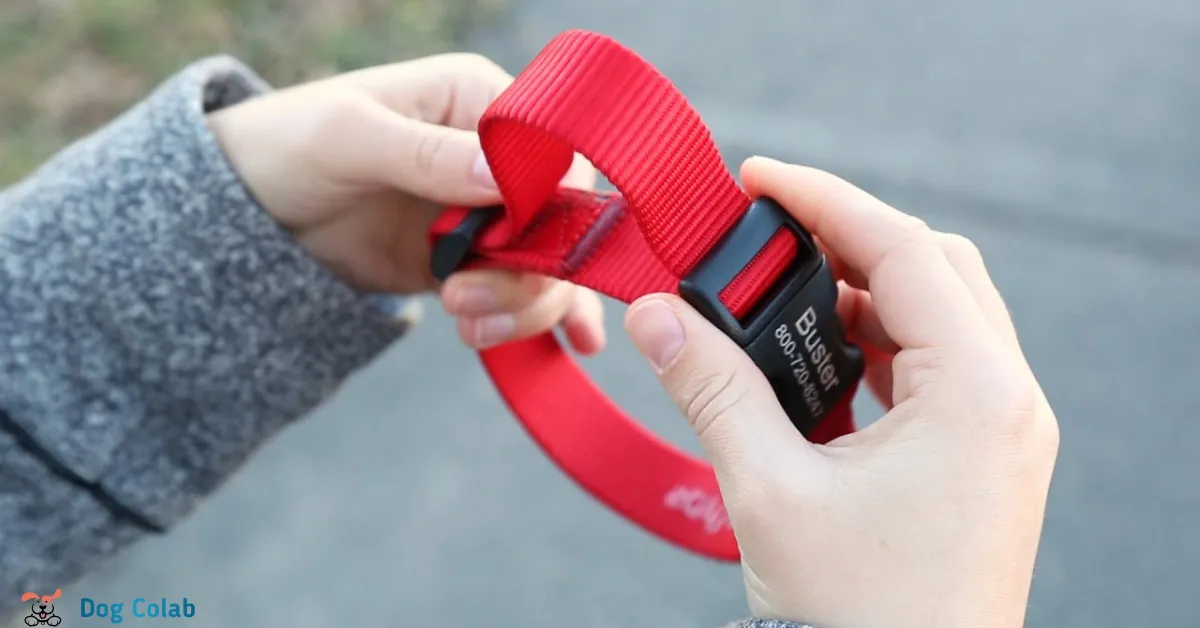A well-fitting dog collar is crucial for your pet’s safety and comfort. However, finding the perfect dog collar can be a challenge, especially when it comes to the right size. Sometimes you buy a collar that’s too big for your dog but there’s no need to worry! In this blog post, we will discuss simple and effective solutions on how to fix a dog collar that’s too big. These solutions will help your dog’s collar fits comfortably and securely.
The Signs of an Overly Tight Dog Collar
Here are some common signs to look out for too tight a dog collar.

1. Difficulty Breathing
If the collar is too tight, it can put pressure on your dog’s windpipe, making it difficult for them to breathe properly.
2. Coughing and Gagging
A dog collar tightness can irritate your dog’s throat and cause coughing or gagging. If you notice your dog coughing frequently or making choking sounds, it may indicate that the collar is too tight.
3. Neck Pain or Sensitivity
Your dog may exhibit signs of discomfort or pain around the neck area. They may be hesitant to move their head, show signs of sensitivity when touched, or exhibit unusual behavior like rubbing their neck against objects to alleviate the discomfort.
4. Fur Loss or Skin Irritation
An overly tight collar can cause fur loss or irritation around the neck. You may notice patches of thinning hair, redness, swelling, or raw skin. In some cases, the skin may become infected or develop sores.
5. Difficulty Swallowing or Eating
If the collar is pressing against your dog’s throat, it may make swallowing or eating difficult. They may show reluctance to eat, take longer to finish their meals or show signs of discomfort while swallowing.
The Risks of a Tight Dog Collar
Using a tight dog collar can pose various risks and potential harm to your furry friend. Here are some risks of using a tight collar on a dog.
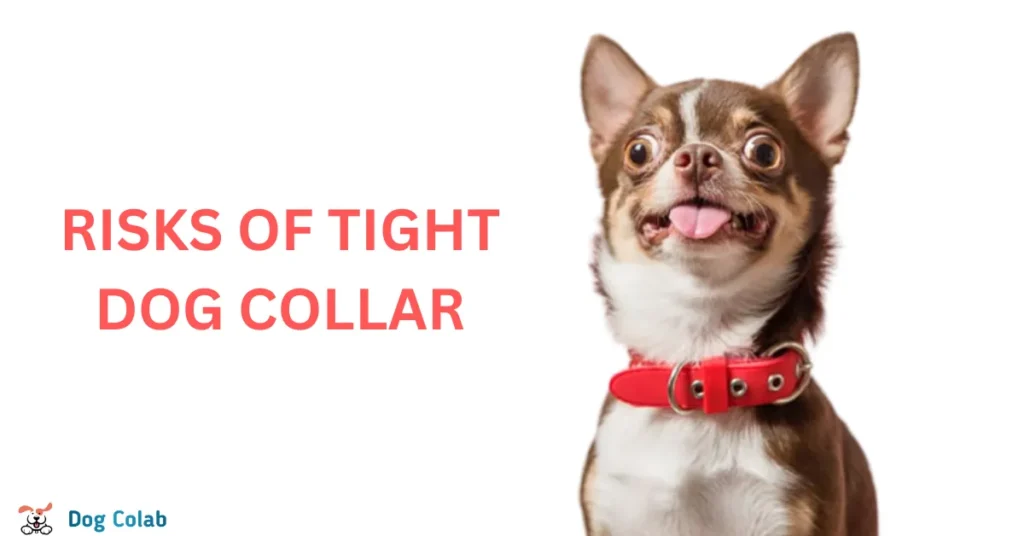
1. Discomfort and Pain
A tight collar can cause discomfort and pain for your dog. It may press against their neck, leading to irritation, chafing, and even skin abrasions. This can make your dog’s neck sore and uncomfortable, affecting their overall well-being.
2. Breathing Difficulties
A collar that is too tight can restrict your dog’s ability to breathe properly. It may put pressure on their windpipe, leading to breathing difficulties, panting, and even choking. This can be particularly dangerous for brachycephalic breeds (dogs with short snouts), which already have respiratory challenges.
3. Neck Injuries
Excessive pressure from a tight collar can cause injuries to your dog’s neck. The sensitive structures in the neck, such as the trachea, blood vessels, and nerves, can be damaged. This can result in serious health issues and may require veterinary attention.
4. Behavioral Problems
A tight collar can contribute to behavioral problems in dogs. When a dog experiences discomfort or pain, it may exhibit anxious or aggressive behavior. They might associate the collar with negative experiences, leading to fear or aggression during collar-related activities such as leash walks or grooming.
5. Escaping or Getting Stuck
If a dog feels uncomfortable or restricted by a tight collar, it may attempt to escape it. Dogs may try to slip their collars, potentially resulting in them running away or getting lost.
The Risks of a Loose Dog Collar
A loose dog collar can pose several risks to the dog’s safety and well-being. Here are some potential dangers of loose dog collars.

1. Choking Hazard
If a dog collar too big, there is a risk of the dog slipping out of it or getting its lower jaw caught in it. This can lead to choking or strangulation if the collar gets entangled in objects or the dog tries to free itself.
2. Accidental Escape
Dogs are curious creatures, and if their collar is loose enough, they may be able to slip out of it and escape. This can be dangerous, as the dog may run into traffic or get lost.
3. Injuries During Play or Interactions
A loose collar can be easily grabbed or caught by another dog during play, leading to injuries or potentially aggressive responses. Additionally, the collar may get stuck on objects, fences, or branches, causing the dog to panic or sustain injuries while trying to break free.
4. Loss of Identification
A loose collar increases the likelihood of losing identification tags or a microchip tag. These tags are crucial in reuniting lost dogs with their owners, so a loose collar decreases the chances of a quick and safe return if the dog goes missing.
Size Chart
If you have a dog collar that is too big and you want to find out how to fix a dog collar that’s too big. Then measure your dog’s neck and find the perfect size for your furry friend with the help of the size chart given below.

You might also want to know about:- Should dogs wear collars all the time.
How To Fix a Dog Collar That’s Too Big?
If you have a dog collar that is too big for your furry friend, there are a few steps you can take to fix a dog collar too big. Here’s a simple method to help you resize a dog collar that is too large.
1. Measure Your Dog Neck
Before attempting any fixes, it’s essential to measure your dog’s neck correctly. Use a measuring tape to determine the circumference of their neck, ensuring that you can fit two fingers comfortably between the tape and their fur.
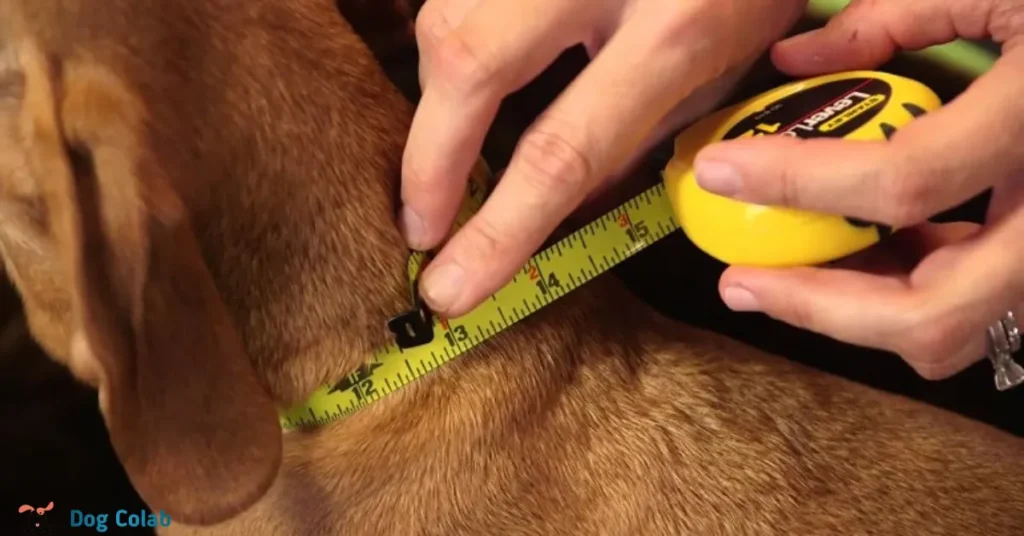
Double-check the measurements to ensure accuracy, as this will help you determine the extent of adjustments required.
2. Consider a Collar Extender
If your dog’s collar is just slightly too big, a collar extender can be an ideal solution. Collar extenders are typically made of durable materials, such as nylon or leather, and come with additional holes and buckles.

They allow you to add extra length to the collar, providing a snug fit for your dog without the need for drastic modifications. Simply attach the extender to the existing collar and adjust it to the desired size. This option is convenient, cost-effective, and avoids altering the original collar.
3. Add Extra Holes
For collars with a buckle or adjustable straps, you can easily add extra holes to achieve a better fit. Start by marking the desired location for the new hole with a pen or marker. To create the hole, use a leather punch tool or a sharp object such as a heated nail or a small screwdriver.
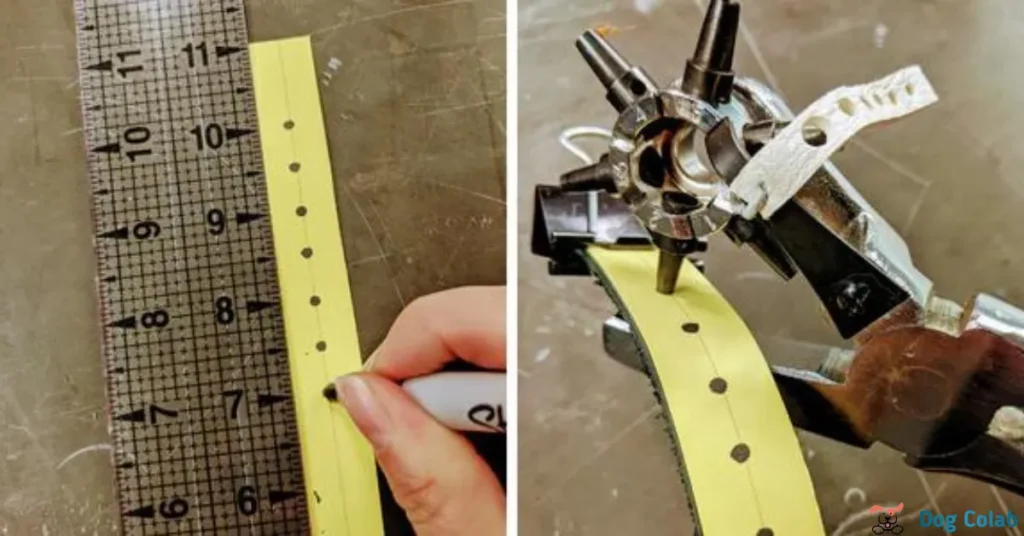
Place a wooden block underneath the collar to prevent damage to surfaces or injuries caused by slips. Apply gentle pressure while rotating the tool in a circular motion until you create a clean hole. Test the collar’s fit on your dog after adding the hole to ensure it’s snug but not too tight.
4. Sewing Alterations
If your dog’s collar is significantly larger and lacks adjustable features, sewing alterations can help achieve a proper fit. Here’s how you can do it.
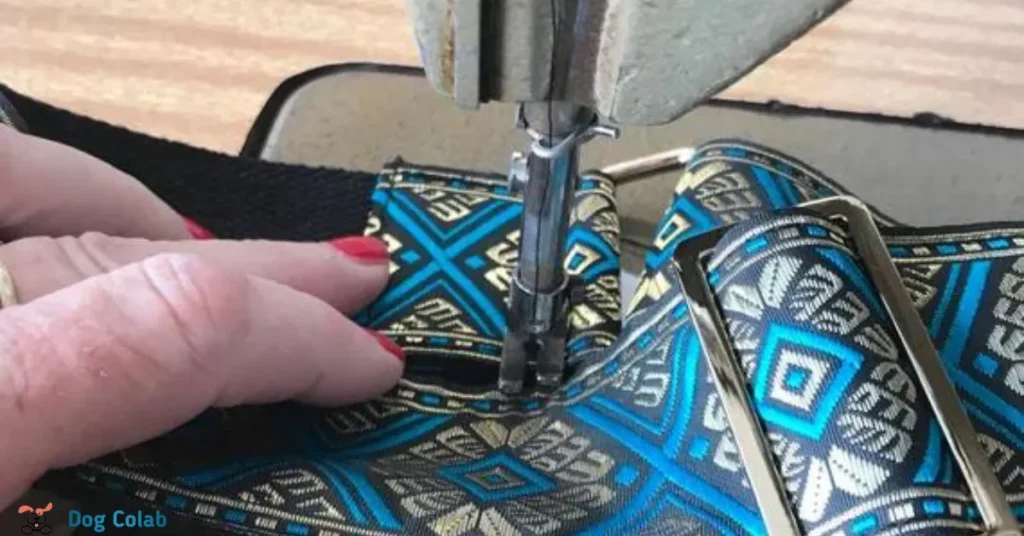
a) Gather the Necessary Supplies: You’ll need a sewing kit, a sturdy thread that matches the collar’s material, and a sewing machine or needle.
b) Determine the Correct Size: Measure your dog’s neck and subtract the excess length of the collar. This will help you determine the amount of fabric that needs to be removed.
c) Disassemble the Collar: Remove any embellishments or accessories from the collar, such as tags or charms, and carefully unpick the stitches holding the buckle or fastening mechanism.
d) Trim and Sew: Cut off the excess collar material, ensuring you leave enough for sewing. Fold the cut end and sew it securely using a sewing machine or needle and thread. Double stitching can add extra durability.
e) Reattach the Buckle: Once you have resized the collar, reattach the buckle or fastening mechanism using strong and secure stitches.
f) Finishing Touches: Trim any excess threads and reattach the accessories or tags to the collar.
You may also be interested in:- How to clean nylon dog collar.
How To Shorten a Nylon Dog Collar?
To shorten a nylon dog collar, you can follow these steps.

1. Measure
Before determining how to make a dog collar smaller, determine how much you need to shorten the collar. It’s important to be precise so that the collar fits your dog properly. Measure the length needed by wrapping the collar around your dog’s neck and marking the desired length with a pen or a small piece of tape.
2. Remove the Buckle
Most nylon dog collars have a buckle that allows you to adjust the length. Locate the buckle and find the end of the collar that feeds through it.
3. Unthread the Collar
Carefully unthread the collar from the buckle by sliding the end through the buckle’s opening. Take note of the original adjustment holes or slots on the collar, as you may need to recreate them later.
4. Trim the Collar
Using sharp scissors, cut the excess length from the end of the collar that you marked in Step 1. Be sure to cut straight across to maintain a clean edge.
5. Seal the Edges (optional)
If you want to prevent fraying and extend the lifespan of the collar, you can use a fray check or apply a small amount of clear nail polish to the cut edge. This will help seal the nylon fibers and prevent them from unraveling.
6. Recreate the Adjustment Holes
If your collar had adjustment holes or slots, you can recreate them by using a hole punch or a heated nail. Measure the appropriate distance from the end of the collar and punch or melt holes at regular intervals, similar to the original holes.
7. Reattach the Collar
Thread the newly shortened end of the collar back through the buckle, starting from the side opposite the adjustment holes. Feed the end through the buckle’s opening and adjust it to fit your dog’s neck snugly.
8. Test the Fit
After reattaching the collar, fasten it around your dog’s neck and check the fit. Ensure that you can fit two fingers between the collar and your dog’s neck for a comfortable fit. Make any necessary adjustments by using the new adjustment holes you created.
Reading Tip:– How tight should my dog’s collar be.
Conclusion “How To Fix a Dog Collar That’s Too Big”
A dog collar that’s too big doesn’t have to be a problem when you have simple solutions at hand. By carefully measuring, considering collar extenders, adding extra holes, or performing sewing alterations, you can ensure your dog’s collar fits securely and comfortably. Remember, a well-fitted collar is essential for your dog’s safety and overall well-being.
NOTE:- You can find more information by clicking this link.
FAQs
1. How do I know if my dog’s collar is too big?
If your dog’s collar slides easily over its head without resistance or if you can fit more than two fingers between the collar and its neck, it’s likely too big.
2. Should collar be tight or loose?
The collar should be comfortably snug but not too tight to restrict movement or cause discomfort. It should allow for easy breathing and movement.
3. Why do collars get loose?
Collars can get loose due to factors like stretching over time, fabric wear and tear, incorrect sizing, or the movement and activity of the wearer.
